The only difference between having a home office in the living room and hiding it for when guests come over depends on flexibility. Temporarily working from the living room increases your chances to put away thoughts of work when relaxing in the same space afterwards.
A temporary home office can mean creating a ritual in which you start the work hours by placing the laptop, then relaxing, breathing deeply and reminding yourself that work can help you become better if you choose to look at it that way.
Here are 5 ways to hide the home office in the living room and do it with style and elegance:
- Hide the home office in the living room by removing the chair
A cleverly disguised home office needs a surface to work from – to place your laptop on and have uninterrupted home office hours. You don’t need a desk if you are being creative with the setup and flexible with the position of the chair.
You can use a chair that comes from a set to even better integrate the idea of an “out of sight, out of mind” home office.
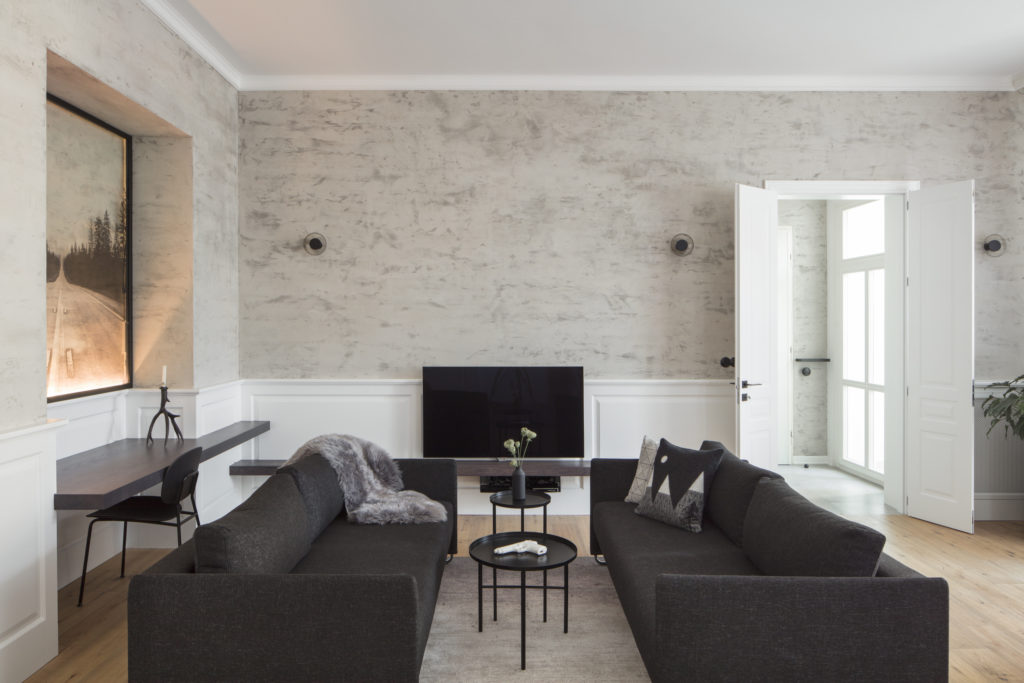
A floating desk on a clever wooden wrap-around in a minimalist living room can shapeshift from shelf to home office central at the addition of a chair. This is a stunning design – simplicity is harder to achieve.
“Perfection is achieved, not when there is nothing more to add, but when there is nothing left to take away.” – Antoine de Saint-Exupéry
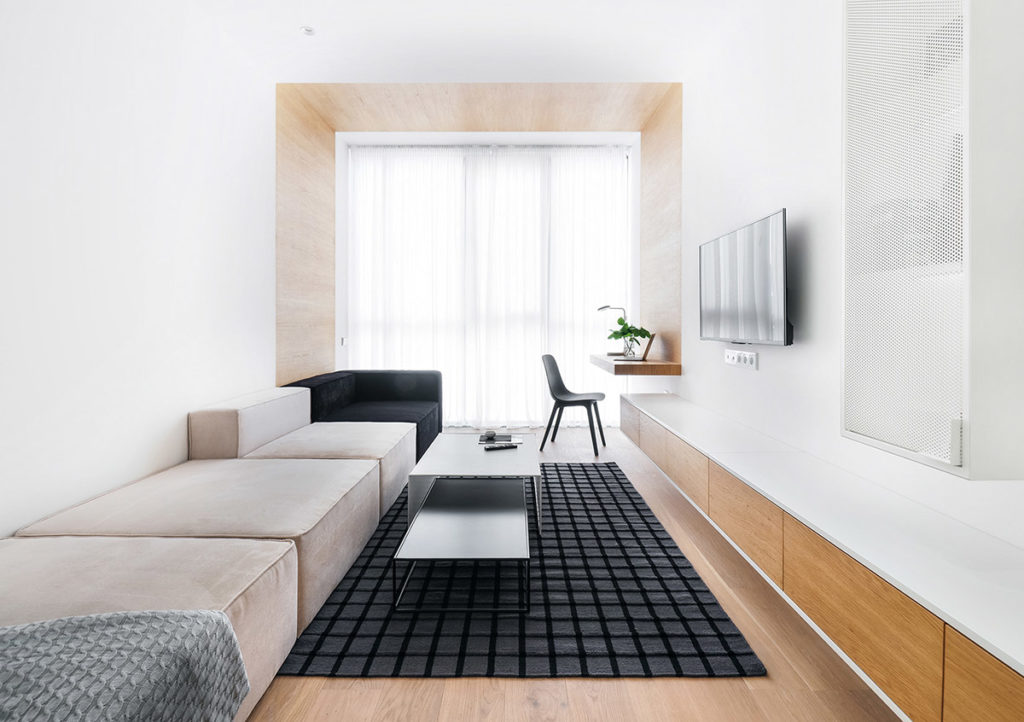
2. Use partial partitioning of the space to keep rooms connected
Use a partition to divide the space and visually separate the living space from the home office – and here’s the twist: build the partition more than halfway up and use it for TV display. This is one way to keep the space connected while visually separated.
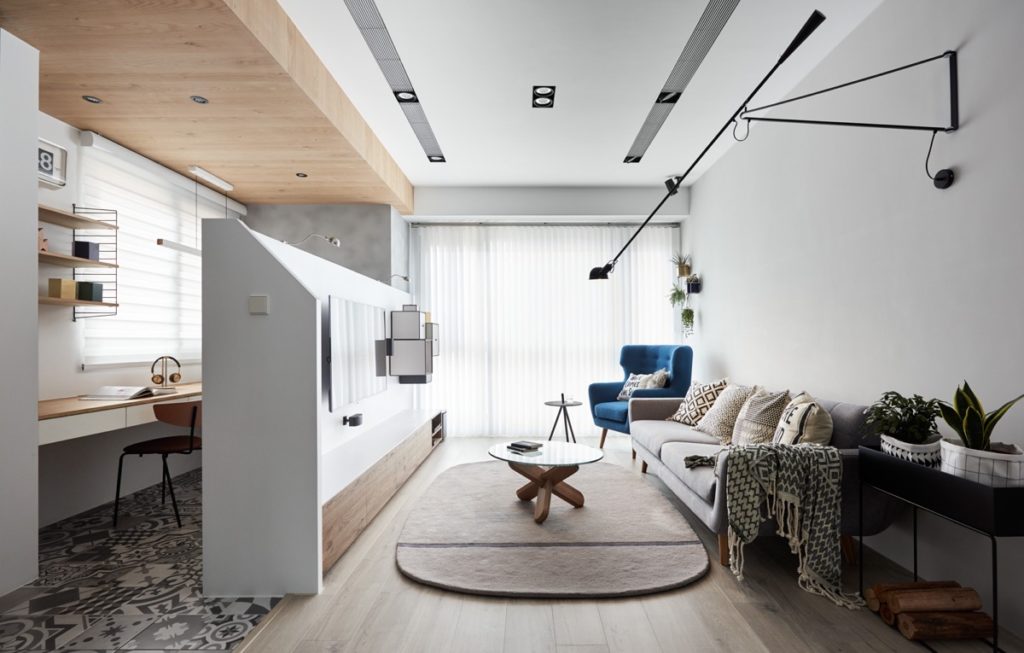
3. Hide the home office in the living room behind the sofa
A home office desk with dark slim legs can be beautifully integrated within a modern living room. The example below showcases how simplicity is the best solution to employ and that sophistication comes from textures, materials, colors, shapes and space arrangement.
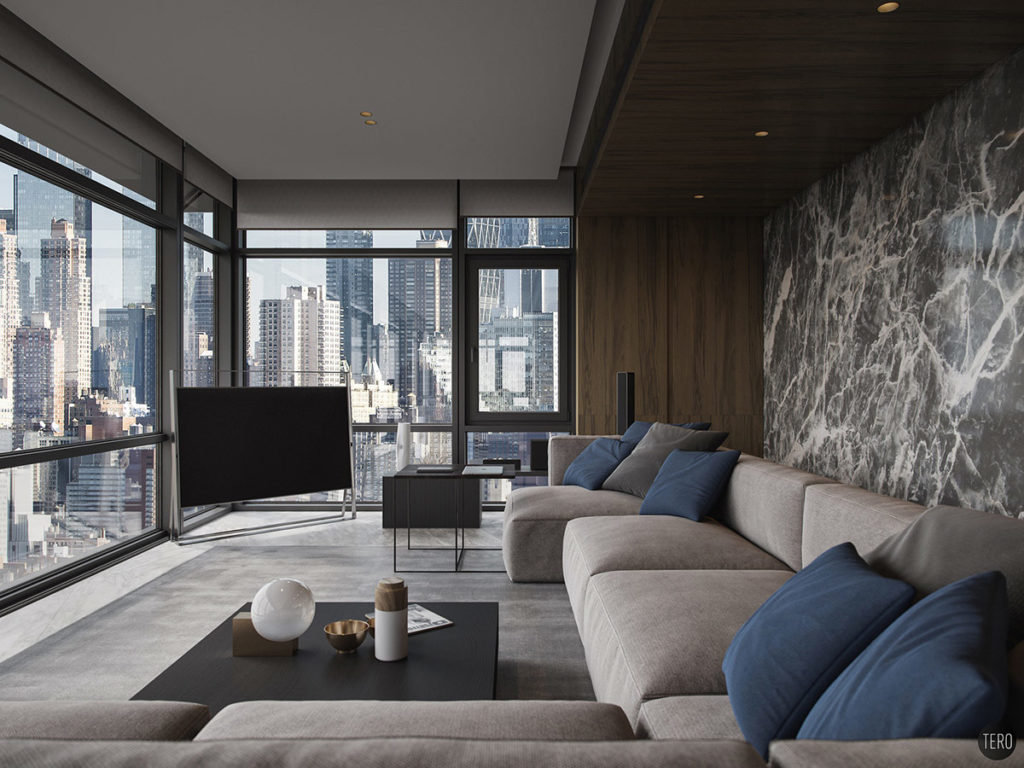
Visualized by Tero Design
Another way to hide the home office behind the sofa is to use bold colors and patterns to attract attention where you want attention to go. An orange chesterfield sofa with a blue and yellow background is powerful enough to hide a small home office in a corner of the furniture.
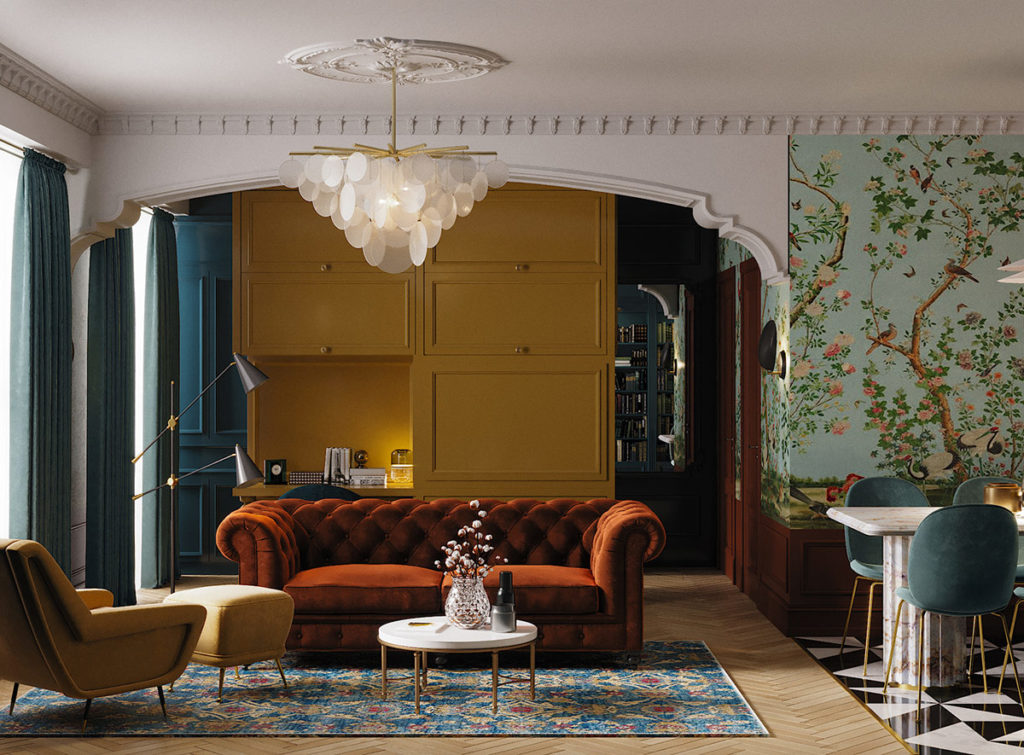
4. Use custom furniture to hide the workspace
Make a custom ledge under the window to hide the home office in the living room. A long ledge that was shaped to run along under the windows can be thinner on one side and shaped into a larger one with room for legs underneath. Add or remove the chair and you have yourself a hidden home office.
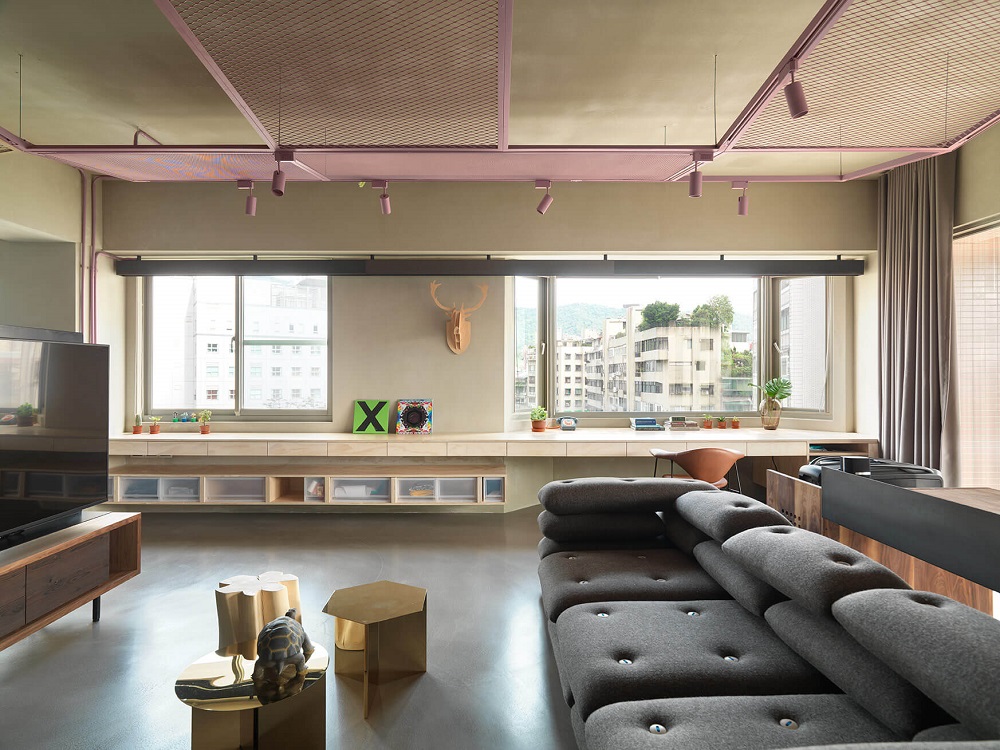
5. Hide the home office behind a structural wall
In an open living space, a structural wall can become the perfect place to hide a whole workspace behind. You get more points if the design flows from one space to the other, like in the visualization below.
With a copper chandelier (that matches the L-shaped green sofa) hanging above the desk and a green chair for comfort, this home office showcases a contemporary way to use your living area.
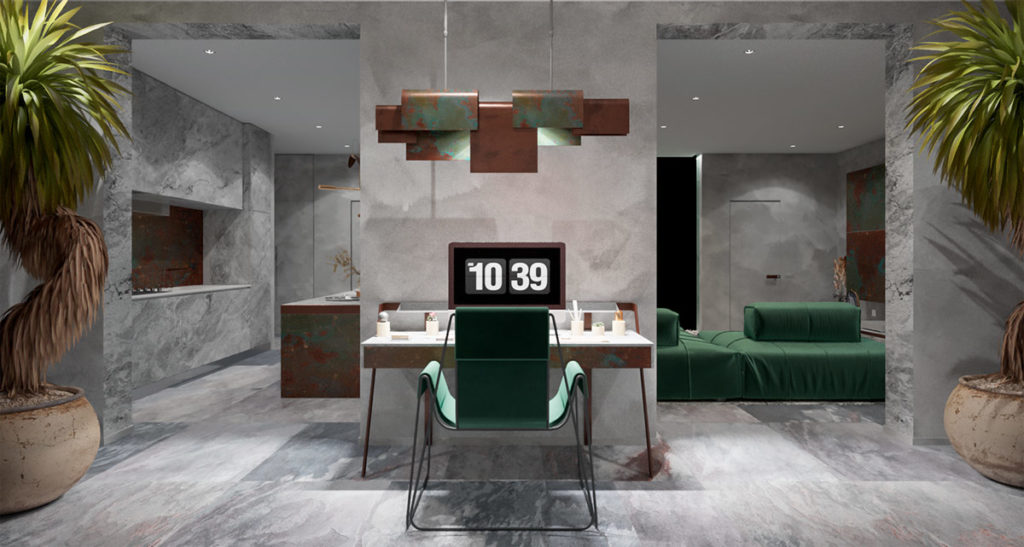
6. Blend the home office into the overall design
When you blend the home office in the overall design, it looks like it’s an integral part of the living room. The example below showcases how decorating the walls with wood can be the perfect opportunity to create a workspace corner.
A wooden floating desk with integrated shelves above is perfectly fitted in a part of the living space, creating a place to work from while having your back turned to any movements that might be distracting.
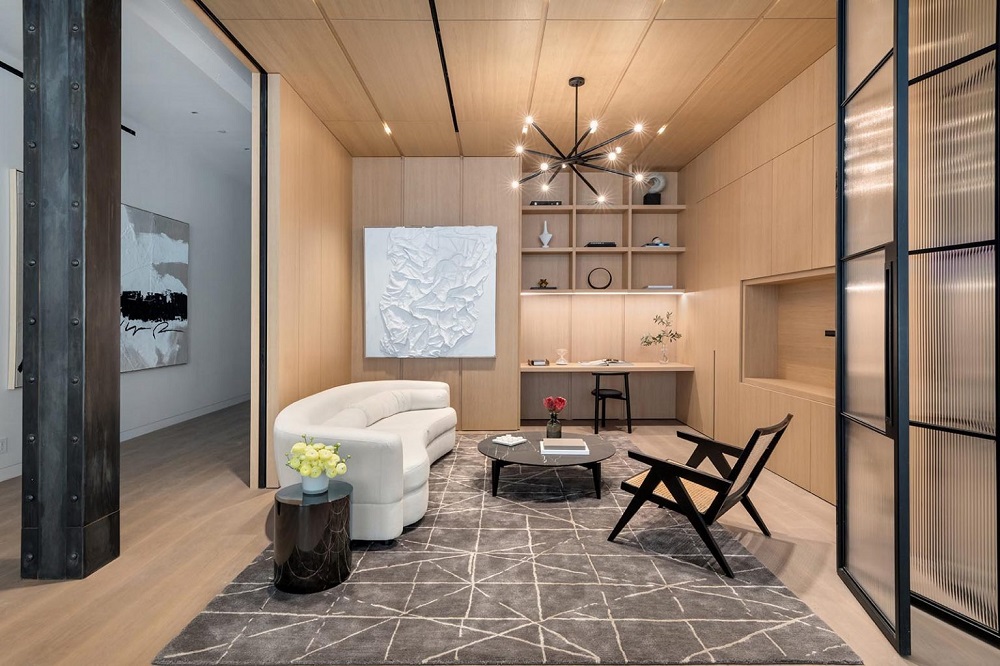
Here are a few more ways to keep your home office out of mind – either by integrating it in the overall design, or by actually hiding it away:
Working From Home Without a Desk: 7 Exciting Alternatives